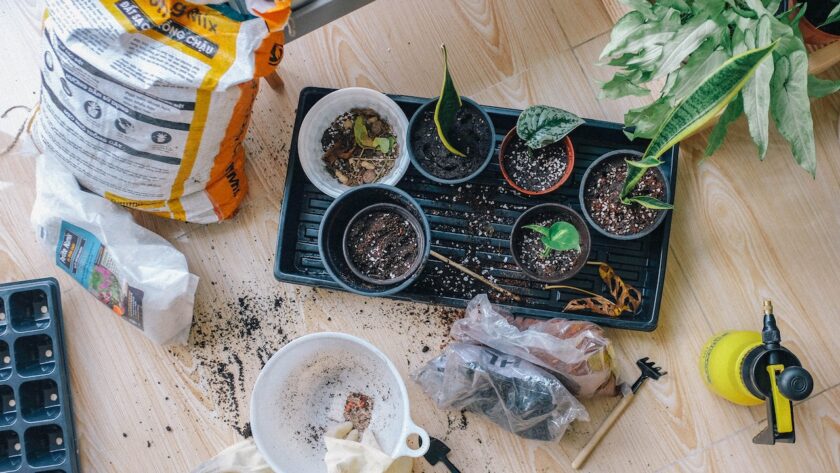As an avid gardener, you may yearn to nurture your green thumb even during the colder months or if you’re limited by space. The good news is that you can continue growing delicious and nutritious vegetables indoors. Indoor vegetable gardening is a rewarding and practical way to enjoy fresh produce year-round, whether you have a spacious sunroom, a small apartment, or anything in between. In this comprehensive guide, we will explore the best vegetables to grow indoors, providing tips and insights on cultivating a thriving indoor garden that keeps you supplied with homegrown goodness.
Why Grow Vegetables Indoors?
Before we delve into the specific vegetables suited for indoor cultivation, let’s explore some of the compelling reasons why indoor vegetable gardening is worth considering:
- Year-Round Harvest: Indoor gardening allows you to enjoy a continuous harvest, regardless of the season or weather outside.
- Freshness and Flavor: Homegrown vegetables are incredibly fresh and packed with flavor, surpassing store-bought options.
- Space Utilization: Even with limited outdoor space, you can maximize your living area by creating an indoor garden.
- Health Benefits: Gardening indoors can be a therapeutic and stress-relieving hobby, promoting mental well-being.
- Sustainability: Growing your vegetables reduces the need for transportation and packaging, contributing to a greener lifestyle.
Scotts Turf Builder WinterGuard Fall Lawn Fertilizer for All Grass Types, 5,000 sq. ft., 12.5 lbs.
$32.49 (as of October 21, 2024 01:58 GMT +00:00 – More infoProduct prices and availability are accurate as of the date/time indicated and are subject to change. Any price and availability information displayed on [relevant Amazon Site(s), as applicable] at the time of purchase will apply to the purchase of this product.)Tomcat Glue Traps Mouse Size with Eugenol for Enhanced Stickiness for Mice, Cockroaches, and Spiders, 6 Traps
$5.07 (as of October 21, 2024 01:58 GMT +00:00 – More infoProduct prices and availability are accurate as of the date/time indicated and are subject to change. Any price and availability information displayed on [relevant Amazon Site(s), as applicable] at the time of purchase will apply to the purchase of this product.)Miracle-Gro Succulent Potting Mix: Fertilized Soil with Premium Nutrition for Indoor Cactus Plants, Aloe Vera and More, 4 qt.
$10.99 (as of October 21, 2024 01:58 GMT +00:00 – More infoProduct prices and availability are accurate as of the date/time indicated and are subject to change. Any price and availability information displayed on [relevant Amazon Site(s), as applicable] at the time of purchase will apply to the purchase of this product.)Catchmaster Rat & Mouse Glue Traps 6Pk, Large Bulk Traps, Indoor for Home, Pre-Scented Adhesive Plastic Tray Inside House, Snake, Mice, Spider Pet Safe Pest Control
$14.38 (as of October 21, 2024 01:58 GMT +00:00 – More infoProduct prices and availability are accurate as of the date/time indicated and are subject to change. Any price and availability information displayed on [relevant Amazon Site(s), as applicable] at the time of purchase will apply to the purchase of this product.)ZEVO Flying Insect Refills for Indoor Light Trap: 4 Light Trap Refill Cartridges Capture Fruit Flies, Gnats and Houseflies (4 Cartridges)
$13.47 (as of October 21, 2024 01:58 GMT +00:00 – More infoProduct prices and availability are accurate as of the date/time indicated and are subject to change. Any price and availability information displayed on [relevant Amazon Site(s), as applicable] at the time of purchase will apply to the purchase of this product.)Now, let’s explore the best vegetables to grow indoors and the essential tips for success.
1. Herbs:
Herbs are among the easiest and most rewarding indoor plants. They thrive in containers on windowsills, in well-lit kitchens, or under grow lights. Some popular herbs to grow indoors include basil, parsley, mint, and rosemary. Fresh herbs not only enhance your culinary creations but also infuse your home with delightful aromas.
Tip: Pinch off the tops of herbs to encourage bushier growth and more abundant foliage.
2. Cherry Tomatoes:
Compact cherry tomato varieties, like ‘Tiny Tim‘ or ‘Micro Tom,’ are ideal for indoor gardening. They produce sweet, bite-sized tomatoes on small plants that can fit on a sunny windowsill. Just make sure they receive plenty of sunlight or grow lights for optimal fruiting.
Tip: Gently shake the plants or use a small brush to aid in pollination if growing indoors without outdoor breezes.
3. Peppers:
Bell peppers and chili peppers can thrive indoors when provided with adequate sunlight and warm temperatures. They add a spicy or sweet kick to your dishes and come in various colors and heat levels.
Tip: Peppers benefit from consistent warmth, so consider using a heating mat under their containers.
4. Salad Greens:
Lettuce, spinach, arugula, and other salad greens are perfect for indoor gardening. They grow quickly and are suitable for containers or shallow trays. Harvest the outer leaves for a continuous supply of fresh greens.
Tip: Rotate containers regularly to ensure even growth and prevent leggy plants.
5. Green Onions:
Green onions, also known as scallions, are low-maintenance and prolific. They can be grown from scraps, and their mild, oniony flavor complements a wide range of dishes.
Tip: Place leftover green onion roots in water, and they’ll regrow new shoots.
6. Microgreens:
Microgreens are tiny, nutrient-packed versions of full-grown vegetables. They are easy to grow in shallow trays or containers and add a burst of flavor and color to salads, sandwiches, and garnishes.
Tip: Harvest microgreens when they are a few inches tall for the best flavor and texture.
7. Carrots:
Believe it or not, you can grow carrots indoors in deep containers or grow bags. Choose smaller carrot varieties like ‘Thumbelina‘ or ‘Paris Market‘ for better results.
Tip: Ensure well-draining soil to prevent root rot, and provide sufficient depth for carrot growth.
8. Cucumbers:
Dwarf cucumber varieties, such as ‘Bush Slicer’ or ‘Patio Snacker,’ are well-suited for indoor gardening. Provide them with a trellis or support system for vertical growth.
Tip: Cucumbers require ample sunlight or strong grow lights and consistent humidity.
9. Radishes:
Radishes are quick-growing root vegetables that thrive indoors. They are perfect for beginners and add a peppery crunch to salads and snacks.
Tip: Keep the soil consistently moist to prevent radishes from becoming too spicy.
10. Beans:
Dwarf bush beans, such as ‘Blue Lake‘ or ‘Provider,’ can be grown indoors if you have a sunny spot. These compact plants yield tasty green beans that you can enjoy fresh.
Tip: Use well-draining soil and provide support for the bean plants as they grow.
Indoor Vegetable Gardening Tips:
To ensure success with your indoor vegetable garden, here are some essential tips to keep in mind:
- Light: Most vegetables require at least 6-8 hours of direct sunlight daily. If natural light is insufficient, invest in high-quality grow lights.
- Containers: Use containers with drainage holes to prevent overwatering. Ensure proper soil drainage to avoid root diseases.
- Soil: Use a high-quality potting mix specifically formulated for vegetables. It should provide good aeration and water retention.
- Watering: Keep the soil consistently moist but not waterlogged. Watering requirements vary by plant, so learn the specific needs of each vegetable.
- Temperature: Maintain a temperature range suitable for your chosen vegetables. Most prefer a range between 65°F and 75°F (18°C to 24°C).
- Fertilization: A balanced liquid fertilizer provides essential nutrients to your indoor plants. Follow recommended feeding schedules.
- Pests and Diseases: Watch for common indoor pests like aphids and spider mites. Address any pest issues promptly. Maintain good air circulation to prevent fungal diseases.
- Pruning: Regularly trim and prune your plants to encourage bushier growth and prevent overcrowding.
- Pollination: For plants that require pollination, such as tomatoes and peppers, gently shake the plants or use a small brush or Q-tip to transfer pollen between flowers.
- Harvesting: Harvest vegetables when they are ripe to encourage continuous production.
Conclusion:
Indoor vegetable gardening provides the opportunity to enjoy fresh produce even when outdoor conditions are unfavorable. Experiment with different vegetables, get creative with your containers, and relish the joy of homegrown harvests throughout the year. Whether you’re a seasoned gardener or a beginner, the delights of indoor vegetable gardening are within your reach.
So, roll up your sleeves, gather your gardening supplies, and embark on an exciting journey of cultivating your favorite vegetables indoors. Happy indoor gardening!















